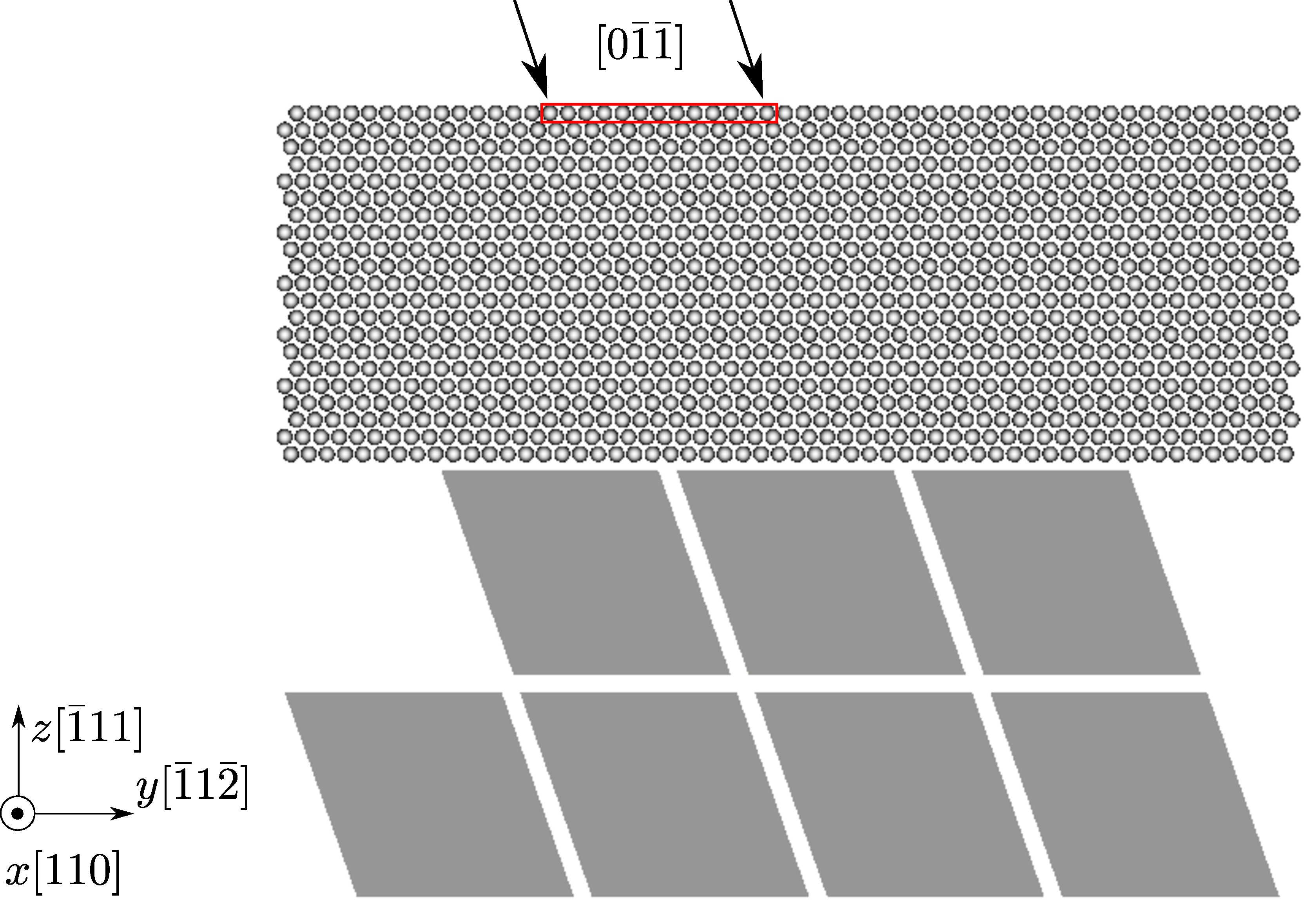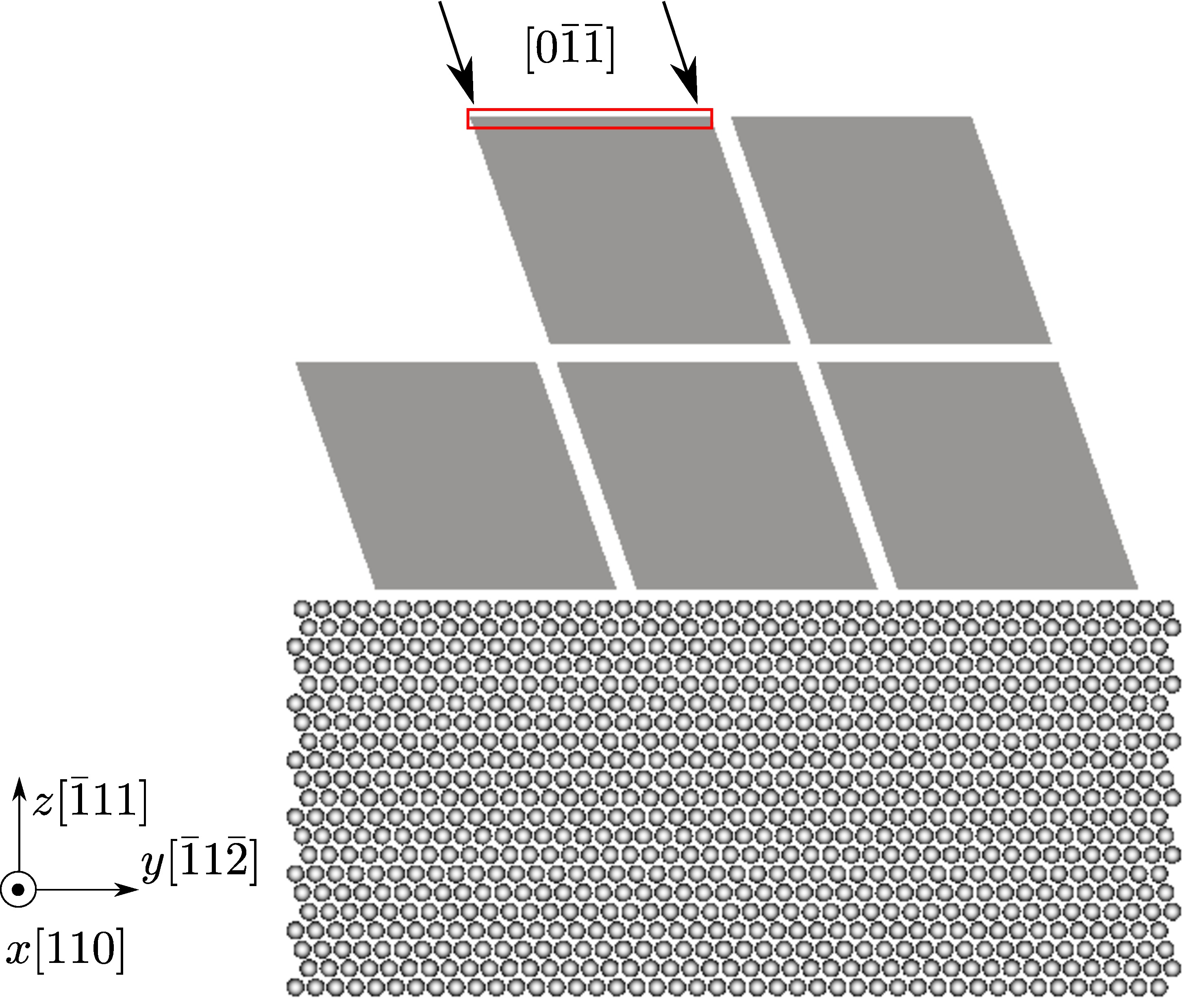Dislocation migration across the atomistic/coarse-grained domain interface
FCC Cu, Mishin EAM potential, 2197 atoms per element in the coarse-grained domain. Results using larger models are published in Sec. 5.4 of Xu et al., 2015.
60^\circ mixed type dislocation migration from the atomistic domain to the coarse-grained domain
In the figure below, an indenter (red box) is displaced continously along the [0\bar{1}\bar{1}] direction to nucleate dislocations from the free surface in the atomistic domain. Note that the atoms that fill in the jagged interstices are not shown for a better visualization of the elements, similar to Fig. 14(b) of Xu et al., 2015. The dislocations then migrate into the coarse-grained domain. Energy minimization using the conjugate gradient method is conducted at every simulation step.

The movie below and the log file are produced using the input file](at2cg.in) and rendered by OVITO:
60^\circ mixed type dislocation migration from the coarse-grained domain to the atomistic domain
In the figure below, an indenter (red box) is displaced continously along the [0\bar{1}\bar{1}] direction to nucleate dislocations from the free surface in the coarse-grained domain. Note that the atoms that fill in the jagged interstices are not shown for better visualization of the elements, similar to Fig. 14(c) of Xu et al., 2015. The dislocations then migrate into the atomistic domain. Energy minimization using the conjugate gradient method is conducted at every simulation step.

The movie below and the log file are produced using the input file and rendered by OVITO.